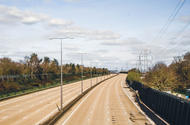The M25 is completely closed between junctions 10 and 11
The first daytime closure of part of the M25 was set to affect millions of drivers – our man finds out if it has
The first-ever planned full-land closure of a stretch of the M25, Britain’s busiest motorway, this weekend had sparked warnings of traffic chaos. Intrigued to how south west London’s infrastructure would cope with the potential chaos, we decided to pay a visit.
Concorde, the Intercity 125 and the M25 motorway. Three icons of British transportation, but only the latter remains in heavy public use. The plane didn’t last too long beyond the turn of the century, and the train has been relegated to regional use rather than the cross-country routes it was designed to serve, but the motorway hasn’t seen a change of use, though – unlike the others, it simply can’t afford to.
Whether you’re heading into the city itself or trying desperately to avoid it, there’s no escaping the M25. London and its surrounding areas have only become more populous since the motorway was completed in 1986, and traffic numbers have only grown with it – originally designed to carry 88,000 vehicles every day, the Department for Transport’s latest statistics show that it carried a whopping 204,000 vehicles every 24-hour cycle in 2022.
As poorly-paved, over-populated and generally soul-crushing as the M25 is, the only thing more nightmarish for drivers than the M25 is a world where it doesn’t exist. Everyone is thinking the same thing the day before first ever full weekend closure of the M25 – between Wisley and Chertsey in Surrey, to allow an old bridge to be demolished and a new gantry to be installed – this is going to be a glimpse into pure, unadulterated motoring hell.
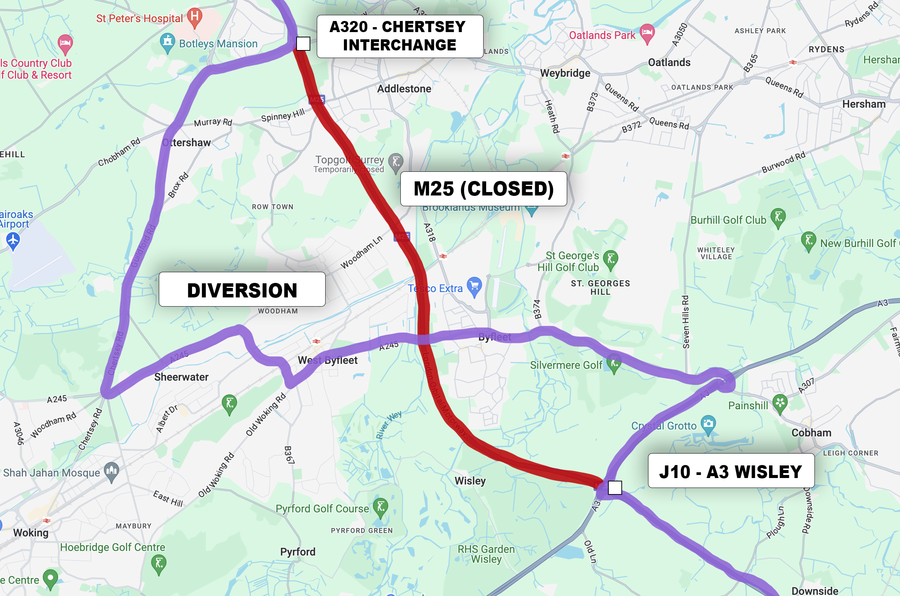
There are no peak traffic times on this section of the M25, known as the South West Quarter – it simply starts at 6am and doesn’t ease up for the next 12 hours. Equally usually for a motorway, 78% of motorists on the SWQ are coming from or travelling to somewhere relatively nearby. Public transport on the routes that these journeys would normally take is borderline non-existent, and there are simply no other major roads to take the pressure off of the motorway.
It’s not like you can just build another main road, either; virtually every piece of undeveloped land in the area is protected by law, underground tunnels would be prohibitively expensive and no-one wants their house to be flattened for a motorway.
Between 4000 and 6000 cars each way, per hour, would normally use this 4.8-mile, eight-lane section of motorway on a weekend. Instead, they’re being sent – if, as requested, they follow the official diversion – on an 11-mile magical mystery tour of the sleepier parts of Surrey, ironically crawling within sight of both the former Brooklands racetrack and the McLaren HQ just outside Woking.
After the first half-mile on the A3, the diversion route is comprised purely of single-carriageway roads, with numerous roundabouts, traffic lights and other bits of potentially progress-impeding street features you certainly wouldn’t find on a motorway. National Highways has issued an advisory to avoid the area like the plague, but locals and drivers alike are expecting Carmageddon.
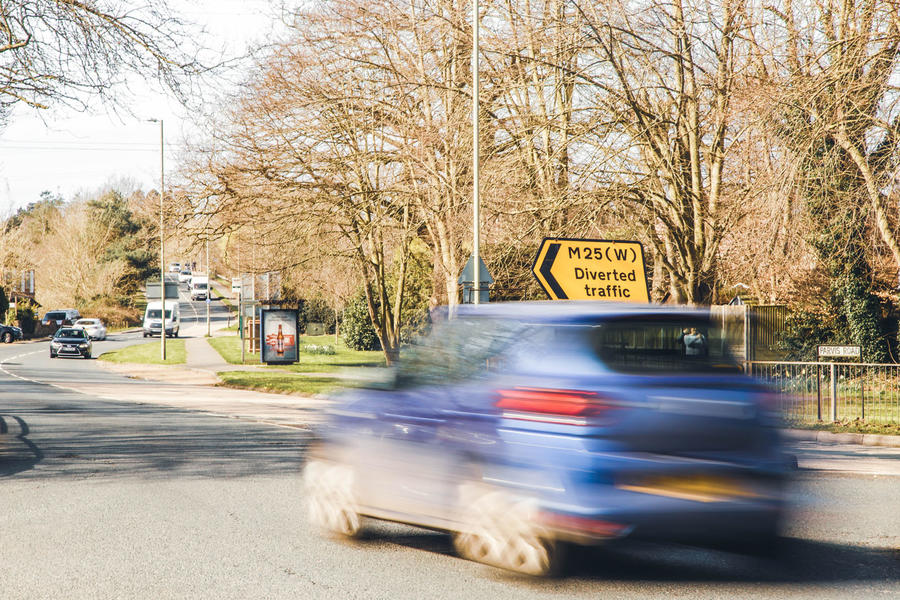
I’d been designated Autocar’s M25 mayhem correspondent, but I didn’t fancy taking my car anywhere near the inevitable mess. So my plan was to become Byfleet’s no-name, full-suspension mountain bike guy, digging out my bike for the first time in years so I could zip past the inevitable unending miles of furious motorists. Executing my plan meant an early-morning train ride from my home in Dorset. It was unexpectedly busy – had people actually heeded the advice and sought alternative transport?
I hop off the train at Byfleet & New Haw, about half a mile north of the diversion route, and head for the A245, expecting it to be transformed into a car park. Cut down the alley, head down the path towards the roundabout and… Oh. Everything is fine.
Byfleet isn’t a dystopian future vision of a cyberpunk future where public transport is banned and people are forced to drive everywhere, choking the streets with thousands of types of traffic – it’s just a small town with a road that barely qualifies as busy going through the middle of it. Sure, there are more lorries than normal, but the road itself is flowing along like it would on any other Saturday morning.
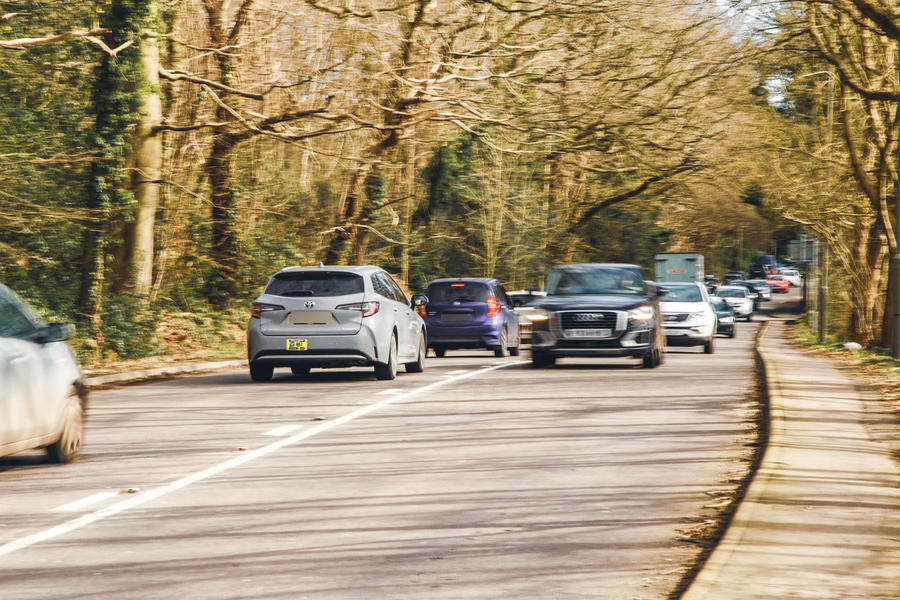
The diversion route crosses over an eerily deserted M25 – eight lanes of silence. A fair few locals have cycled up here to take a look at the empty expressway, and they share my disbelief that it’s possible for the diversion route to be so quiet – especially as any M25 issues tend to end up clogging their local roads.
Further along, West Byfleet high street – a traffic-light controlled crossroads that was expected to be a massive bottleneck – is also flowing just as smoothly as it normally would. I speak to a few shop owners, who are just as surprised about the whole thing as I am.
“I cancelled all of our appointments for today, but I needn’t have bothered,” says Ian Barnes, who runs Surrounds Art on the high street. “I drove in super early at sox am expecting pandemonium, but it’s been even quieter than it normally is – I think that’s because it’s been advertised so well and so far in advance.”
Tony Evans, who lives on a dead-end that leads onto the diversion route, agrees with the sentiment. “We were given advance warning – the bridge over the canal [on the route] was closed the other week, but they made it clear the work had to be done in time for this, so we’ve been on notice for two months”. He’d been expecting to have been blocked in, so had set the weekend aside to polish up his classic Ford Thunderbird instead.
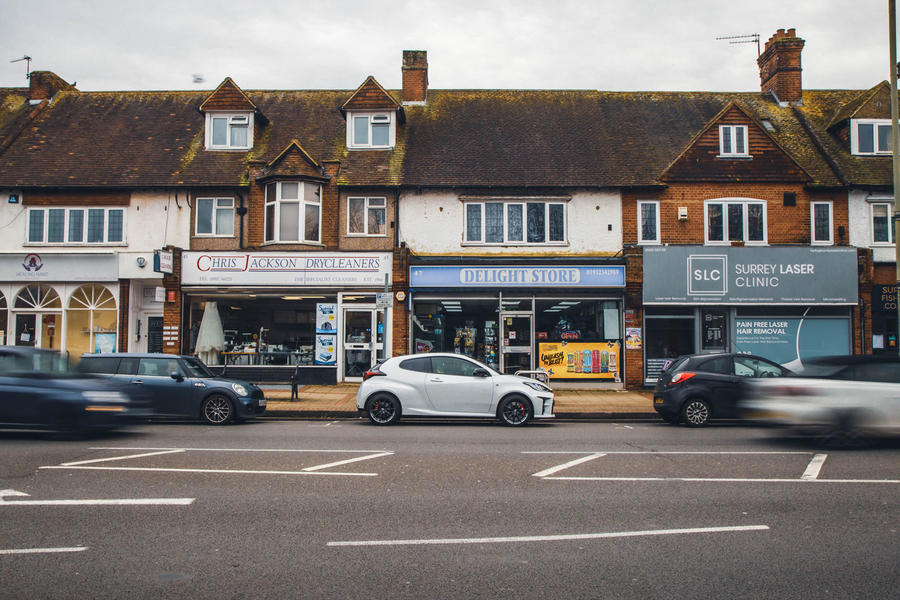
The small pockets of traffic that do appear seem to mainly be as a result of people trying to turn against the flow of the tide, attempting to head down side roads and pull into driveways. As I make my way towards the junction with the A3, it slows down – Waze reckons traffic is averaging 8mph – but it never stops completely. The other way, towards Woking, is even clearer – what was expected to be a pinch point of people on the diversion route and those trying to get into the largest town in the area is surprisingly clear.
All in all, it’s a successful diversion. With advance notice and people actually listening to the advice from National Highways, it’s worked out so much better than anyone could have expected. Of course, it wouldn’t be like this every day – many people have undoubtedly adjusted their plans to avoid heading out on the roads today – but it’s hard to argue that it’s been pulled off incredibly smoothly. There are five more similar closures scheduled on the M25 this year – here’s hoping they’re all like this.
Source: Autocar
